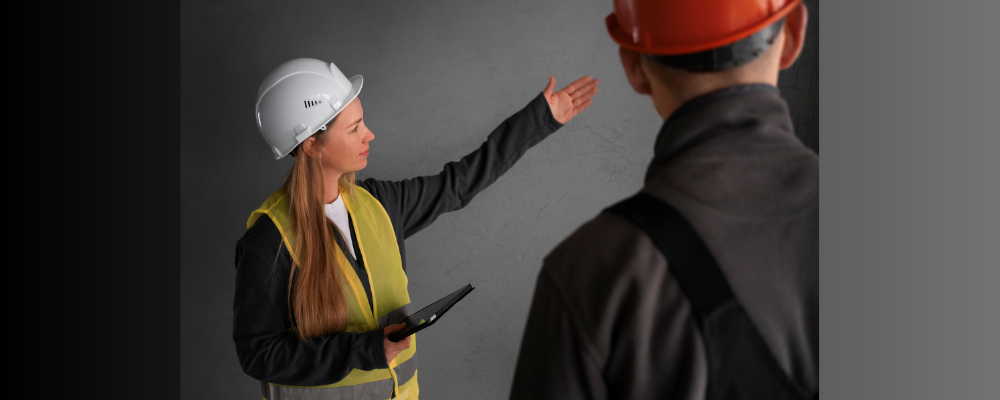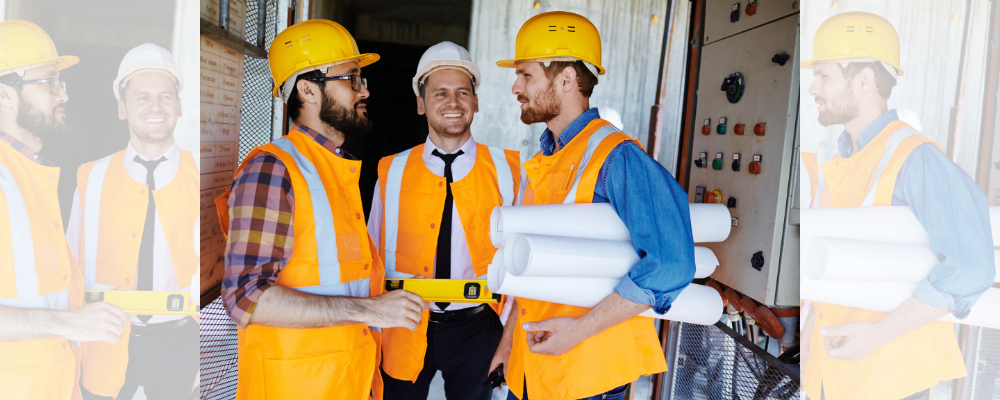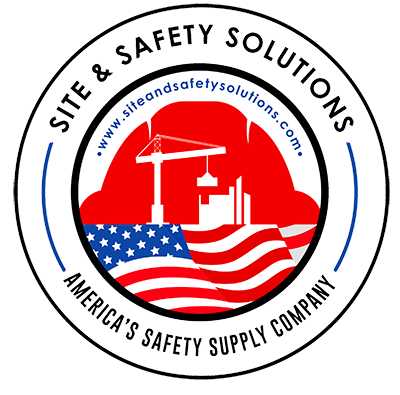
Introduction:
Worker safety on construction sites is paramount. Construction sites present numerous hazards, from heavy machinery to working at heights, making it crucial to prioritize safety measures. Despite advancements in safety equipment, construction work remains inherently risky. This blog aims to provide comprehensive safety tips and guidelines tailored explicitly to construction workers, ensuring their well-being and minimizing occupational hazards.
Personal Protective Equipment (PPE)
-
Coveralls
Construction workers face various hazards, including chemicals, dust, and debris exposure. The 3XL DISP COVERALL W/HOOD E/W/A is a frontline defense that provides full-body protection. Made from durable materials, these coveralls offer resistance against chemicals, abrasions, and other occupational hazards. The hooded design further shields the head and neck, ensuring comprehensive protection.
-
Ear Protection
Noise-induced hearing loss is a prevalent concern in construction. The BOX R Plug Corded Earplugs NRR 32dB and ANSI Certified are specifically engineered to attenuate loud noises while allowing communication and awareness of surrounding activities. Additionally, the FLANGE Ear Plugs offer comfort and effectiveness in noise reduction, making them indispensable for construction workers exposed to high-decibel environments.
Hazard Identification and Control for Worker Safety
-
Traffic Safety
Construction sites are dynamic environments with constantly moving workers, vehicles, and materials. Managing traffic flow within these sites is crucial to prevent accidents and ensure a safe working environment. TruForce™ Traffic Delineators emerge as indispensable tools in bolstering traffic safety on construction sites, offering multifaceted advantages in hazard control.
-
Efficient Traffic Flow Management:
TruForce™ Traffic Delineators are engineered to streamline traffic flow by providing clear guidance and demarcating specific areas within construction sites. Their strategic placement helps direct vehicles and workers along designated paths, minimizing the risk of congestion and ensuring a smoother operational flow.
-
Zone Demarcation and Accident Prevention:
These delineators serve as visible markers, clearly defining work zones, pedestrian walkways, and areas restricted to heavy machinery regarding Worker Safety. Their high-visibility colors and reflective surfaces significantly reduce the likelihood of collisions and accidental intrusion into restricted zones, thus preventing potential accidents and injuries.
-
Enhanced Visibility for Worker Safety:
One of the pivotal features of TruForce™ Traffic Delineators is their high visibility, even in low-light conditions. This visibility is instrumental in ensuring workers and vehicles remain aware of their pathways. By providing a clear visual guide, these delineators mitigate the risks of poor visibility, such as collisions or accidental straying into hazardous zones.
-
Contribution to a Safer Work Environment:
The implementation of TruForce™ Traffic Delineators isn’t merely a safety measure; it’s a proactive step toward fostering an environment for Worker Safety. Their role in hazard identification and control minimizes the potential for accidents, promoting a culture of safety consciousness among workers and site visitors.
TruForce™ Traffic Delineators are pivotal in ensuring construction sites for Worker Safety and hazard control. Their ability to efficiently guide traffic flow, demarcate work zones, and provide high visibility contributes significantly to accident prevention and creating a secure working environment. Integrating these delineators within construction sites isn’t just a safety measure—it’s an investment in safeguarding lives and fostering a safety awareness and compliance culture.
Safety Guidelines for Construction Workers
-
Fall Protection
Falls from heights are among the leading causes of injuries in construction. Adequate fall protection measures such as harnesses, guardrails, and safety nets are indispensable. Training workers on proper equipment use and regular inspection of fall protection gear are imperative to prevent accidents and ensure worker safety.
-
Handling Hazardous Materials
Construction sites often involve handling hazardous materials. Implementing strict protocols for identifying, storing, handling, and disposing of such materials is critical. Proper training and appropriate PPE when dealing with dangerous substances are essential to minimize health risks.
-
Machinery Safety
Operating heavy machinery demands strict adherence to safety protocols. Thorough training, regular maintenance, and pre-operational equipment checks significantly reduce the risk of accidents. Emphasizing the importance of using safety guards and following manufacturer guidelines is crucial for machinery-related safety.
-
Heat and Cold Stress Management
Extreme weather conditions pose threats to construction workers. Managing heat stress through hydration and scheduling work during more incredible hours is vital. Similarly, providing adequate protection and breaks in cold weather to prevent hypothermia is essential for worker well-being.
Effective Communication Protocols for Construction Site Safety
Construction sites are dynamic environments where effective communication is pivotal for ensuring Worker Safety. Communication challenges, often stemming from noise and distance, pose significant risks. Worker safety on construction sites is paramount. Overcoming these hurdles demands robust communication strategies to prevent accidents and ensure the well-being of all workers.
Communication Challenges on Construction Sites:
1. Noise-related Hurdles: Construction sites are inherently loud environments, with heavy machinery, tools, and equipment generating constant noise. This noise impedes verbal communication, making it challenging to convey instructions or warnings effectively.
2. Distance-related Barriers: Construction sites often span large areas, spreading workers out. Distance amplifies communication challenges, making relaying information promptly across the site cumbersome.
Risks Associated with Communication Breakdowns: Communication breakdowns can result in severe consequences, including accidents, injuries, or even fatalities. Misunderstandings due to poor communication might lead to incorrect actions or delays in addressing critical safety concerns.
Implementing Communication Strategies:
1. Use of Hand Signals and Standardized Gestures: Employing standardized hand signals and gestures facilitates clear communication despite noise. These universally understood signals ensure that Worker Safety can convey essential messages without relying solely on verbal communication.
2. Integration of Two-Way Radios or Communication Devices: Implementing two-way radios or communication devices allows real-time updates and facilitates immediate communication between workers across the construction site. These devices enable quick dissemination of crucial information, improving emergency response times.
Importance of Regular Safety Briefings:
1. Conducting Daily Safety Meetings: Daily safety meetings serve as a platform to reinforce communication protocols and safety procedures in Worker Safety. These meetings inform workers about potential hazards, ongoing tasks, and safety guidelines, fostering a safety-conscious environment.
2. Encouraging an Open Communication Culture: Creating a culture where workers feel comfortable reporting hazards or raising concerns is vital. An open communication culture empowers employees to promptly communicate potential risks, ensuring swift intervention and mitigation of threats.
Effective communication protocols are the backbone of construction site safety. By acknowledging and addressing communication challenges, implementing robust strategies, and fostering a culture of open communication, construction sites can significantly enhance safety measures and minimize risks to workers’ well-being.

Emergency Preparedness and Response on Construction Sites”
Emergency preparedness is a cornerstone of safety in the construction industry. Implementing robust plans and protocols ensures a swift and efficient response in critical situations. Here’s a detailed note on establishing, training, and maintaining emergency preparedness and response on construction sites:
Establishing Emergency Response Plans:
Construction sites are prone to various emergencies, ranging from fires to accidents. Developing comprehensive emergency response plans tailored to these scenarios is imperative. These plans should outline step-by-step emergency procedures, including evacuation routes, assembly points, and methods for alerting authorities and workers. Assigning clear roles and responsibilities to designated personnel during emergencies ensures a coordinated and effective response.
Training and Drills:
Regular training and drills are pivotal in preparing construction site personnel for emergencies. Conducting frequent exercises familiarizes workers with emergency protocols, enabling them to respond swiftly and confidently in real-life scenarios. Providing comprehensive first aid and CPR training to designated personnel empowers them to administer immediate assistance until professional help arrives. This training is invaluable in mitigating the severity of injuries and potentially saving lives.
Access to Emergency Equipment:
Accessibility to emergency equipment is non-negotiable. Fire extinguishers, first aid kits, and marked emergency exits should be strategically placed and easily accessible across the construction site for Worker Safety. Regular maintenance and checks on emergency equipment ensure they are fully functional and always ready for use in Worker Safety. Routine inspections guarantee that fire extinguishers are fully charged, first aid kits are stocked, and emergency exits are unobstructed and marked, maintaining a proactive stance toward safety.
Ensuring a comprehensive emergency preparedness and response approach is crucial for construction sites. Implementing these measures not only complies with safety regulations but also prioritizes the well-being of every worker on-site. By establishing clear plans, providing adequate training, and maintaining accessible emergency equipment, construction sites can minimize risks and swiftly respond to emergencies, fostering a safer work environment.
Mental Health and Well-being for Construction Workers
- Addressing Stress Factors:
- Discussing the stressors unique to the construction industry (long hours, job insecurity, etc.).
- Offering resources and support for managing stress and mental health regarding Worker Safety.
- Promoting a Supportive Environment:
- Encouraging open discussions about mental health among workers.
- Providing access to counseling services or employee assistance programs.
- Work-Life Balance Initiatives:
- Advocating for regular breaks and time off to prevent burnout.
- Implementing policies that support a healthy work-life balance.
For more information and to explore our product range, please visit our website, Site and Safety Solutions, and Facebook page.
3XL DISP COVERALL W/HOOD E/W/A
BOX R Plug Corded Earplugs NRR 32dB and ANSI Certified
Conclusion
In conclusion, Worker Safety in construction sites demands a proactive approach. Construction workers can significantly mitigate risks by prioritizing personal protective equipment, hazard identification, and adherence to safety guidelines. Worker Safety is imperative to foster a safety-conscious culture where every worker takes responsibility for their well-being and that of their colleagues. Implementing these safety measures is a legal and moral obligation to ensure workers return home safely daily.










